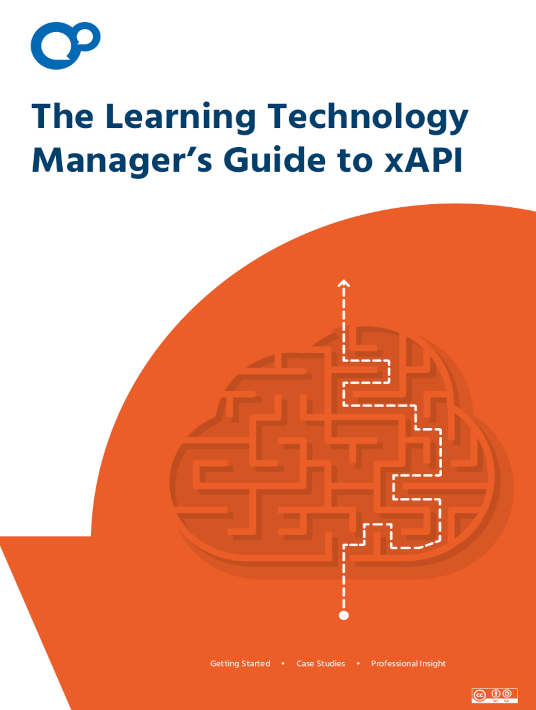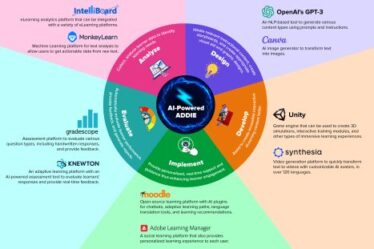
The API That Changes Everything
xAPI is a document that, if you follow it, will give you a method for how you can communicate learning activity data between one system and another. It is a derivative of the term ‘API’, or Application Programming Interface. Before the advent of APIs, getting two systems to talk with each other required a large amount of code development and integration time. API’s have transformed this relationship, meaning that basic integrations between different software packages are now relatively trivial. You’ll use APIs every day, whether or not you notice them. At its most basic you can consider an API a bit like a Question and Answer stream: One system will ask the other system a question, and get a response in a format it can interpret.

eBook Release
The Learning Technology Manager’s Guide Τo xAPI
Download this eBook and discover why and how you too should be using xAPI.
So, one system might ask another, “can you show me a list of all the registered users on your system?” and the other system would respond with a formatted list of registered users. By using this Q&A style format we can limit the access one system has to another – your system will only answer the questions for which it is authorized to give out the answers, you don’t have to give complete access to a database. One problem with APIs is that they can be quite specific; I can come up with the way I want my system to answer your questions and you’ll have to customize your questions to match the information I’m willing to give. Simply having an API isn’t enough; it must be really well documented or even better, subscribe to use some wider standard that we can all learn about, saving ourselves the hassle of using a new API each time we want to make a connection.
The xAPI is an example of the latter; a group of people coming together to decide on the language we will collectively use to build our interfaces – a standard operating procedure. Because xAPI has been built by learning people, it uses language that allows us to talk about things we do in learning – like querying for assessment results or understanding who was a learner’s tutor.
The Relationship Between SCORM and xAPI
We do already have systems in place for tracking learning, the most common being SCORM (the Shareable Content Object Reference Model) – which allows you to package up content to deploy on a Learning Management System (LMS) and then track who uses it.
There are similarities between SCORM and xAPI. The same government department created both. In places, they overlap with what they do and how they do it. You could even say the Experience API is an evolution of the SCORM principles, but they are mostly quite different. You wouldn’t necessarily replace SCORM with xAPI and vice versa.
SCORM allows you to specify a package of content and the sequence in which it must be navigated, and other things too. With xAPI you cannot do this.
The API setup around SCORM is based on the principle that you have a package of learning content and you want to load it onto an LMS for users to launch and be tracked using.
But learning has evolved and we’re no longer all about logging in to the LMS to launch learning content. Now we learn from micro-content, located in a wide variety of places. We use mobile phones, simulations, games and more.
We’re also increasingly cognizant of the impact of ‘informal’ learning experiences; stuff that happens outside of the sphere of L&Ds control. How can we account for this?
SCORM has become inadequate for our current and future needs. Learning doesn’t always happen on the LMS. Enter the Experience API. xAPI gives us a looser framework that allows us to communicate between any two systems, not just between learning content and the LMS. In creating the xAPI, its authors couldn’t readily put any IT system out of scope – we could be just as easily learning on a phone, or a TV, or in real-life. This is where xAPI thrives, allowing us to understand what occurred on one system, in another system, in a human-readable way.
In the short-term, we still have a need for SCORM. Right now it isn’t easy to package content up using some of our most popular authoring tools and get it working with your LMS. The Experience API community is working on this through initiatives such as ‘CMI-5’. But it is to the future, where we no longer consider ‘packaging’ learning content up, that most of our attention is focused.
Conclusion
Would you like to learn more about the Experience API? Download the eBook The Learning Technology Manager’s Guide Τo xAPI and get acquainted with the xAPI and its benefits.


